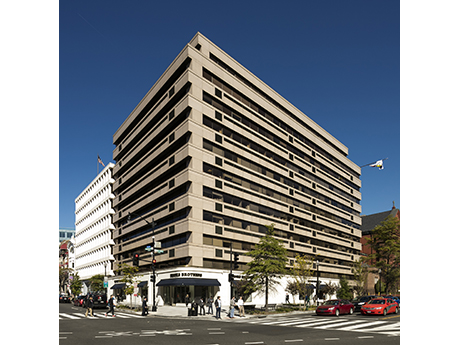The Washington, D.C., office market is facing challenging times, marked by unprecedented vacancy rates, dwindling demand and a significant supply-demand imbalance. Within these constraints, the flight to quality trend is reshaping how investors and lenders view office assets and should lead to an inventory reclassification.

The divide between high-quality assets and lesser properties widens almost daily, creating a bifurcated market with fierce competition for quality space. Meanwhile, older, less desirable properties languish, accumulating vacancies as they fail to meet current occupier expectations.
Without intervention, the less desirable properties will continue to drag down the market’s perception, obscuring the success of top-tier spaces with a headline vacancy rate. To contribute to the stabilization of the market, office participants must acknowledge this divide and assess distressed assets not as liabilities, but as opportunities to reset and reclassify properties based on realistic usage and demand.
Lenders are central to this process as they control a substantial portion of distressed office stock. After years of extending loans to stave off foreclosure during uncertain times, many are now realizing that relief is unlikely to materialize organically. As a result, foreclosures are already up 121 percent in 2024 year-to-date over 2023 in Washington, D.C.
On average, those foreclosures resulted in a value loss of 61 percent — but the properties foreclosed had an average vacancy rate of 46.8 percent. Enough trades have now occurred to provide price discovery that should recalibrate valuations and pave the way for adaptive reuse, repositioning or even removal of excess, obsolete supply.

This reclassification of office space offers several benefits to the market. First, it will contribute to the stabilization of vacancy rates. Removing obsolete properties from the market will allow D.C.’s market to reflect a more accurate supply-demand ratio.
Next, reclassification will help preserve the most prime assets by protecting Class A and trophy properties, helping them maintain their competitive edge rather than being weighed down by the poor performance of lesser buildings.
Perhaps most important, reclassification will lead to repurposing and revitalization of outdated properties. Many assets may find new life as residential properties or community-oriented developments, aligning with the District’s broader urban and housing needs.
The office sector’s current predicament has been more than four years in the making, and as other U.S. office markets are finding, there’s no quick fix. The current landscape reflects a fundamental shift in how space is used and valued in D.C., and the importance of proactive steps by lenders cannot be overstated. Lenders must continue to embrace the inevitability of losses on distressed properties while aiming to salvage value through price resets and strategic repurposing.
While the rate of increase in foreclosures is severe, the number of foreclosures still represents a very limited proportion of the market — just 1.6 percent of metro D.C.’s office inventory. Property level events that negatively impact net operating income (NOI) within the less desirable buildings coupled with a growing wall of loan of maturities will combine to grow this number exponentially in the coming years.
The time has come for candid assessment: holding onto outdated properties in hopes of a market rebound is no longer a viable strategy. As lenders confront these distressed assets, their actions will influence D.C.’s commercial real estate landscape for years to come. By embracing a reclassification framework, lenders and investors can work together to foster a healthier market where space supply more closely matches demand and properties are valued based on current market realities, not past aspirations.
Commercial real estate professionals are conditioned to always point to the silver lining. And despite the bleak assessment, we must point out that reclassification is where that silver lining does emerge. By leading the charge in reclassifying and repurposing underutilized spaces, lenders can shape a new future for a revitalized, rebalanced market.
By thinking creatively and strategically, working with lenders, there is potential to turn functionally obsolete office product into something valuable and necessary for the community, all while simultaneously stabilizing the market as a whole.
— By Tommy Cleaver, executive vice president, capital markets at CBRE. This article originally appeared in the November 2024 issue of Southeast Real Estate Business.


